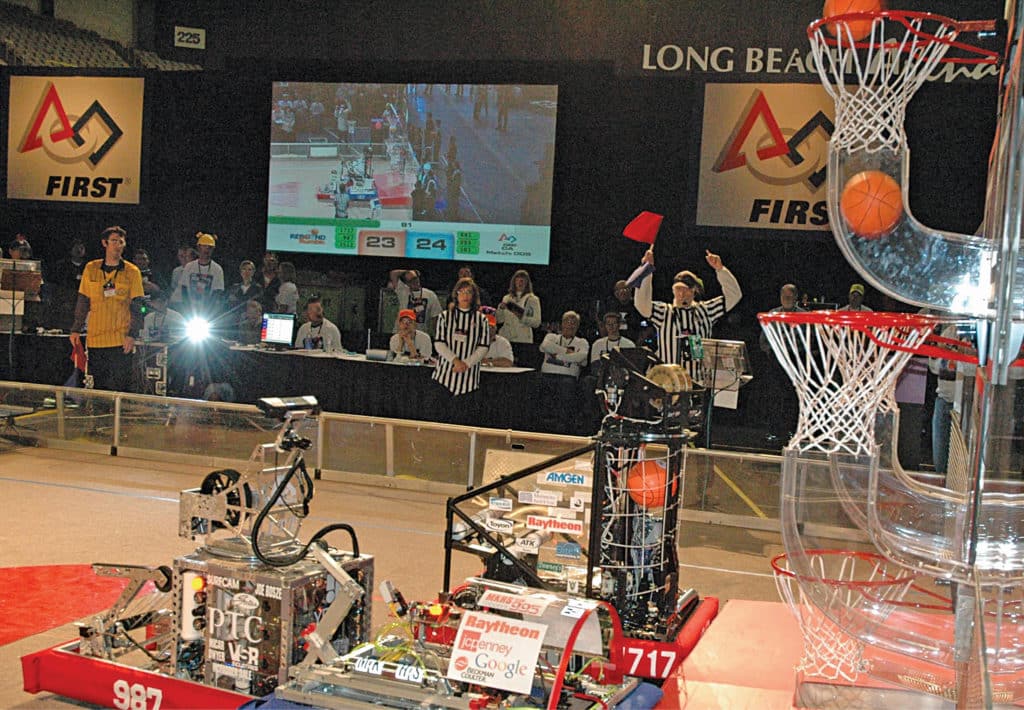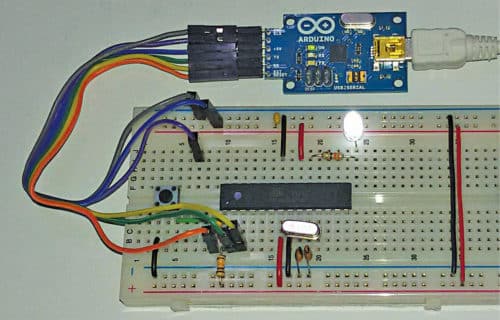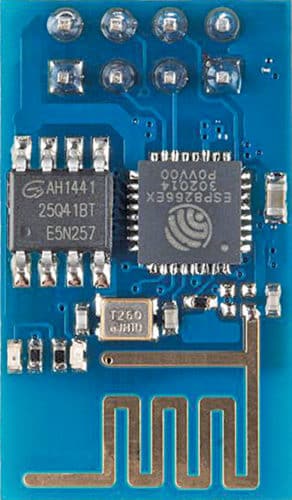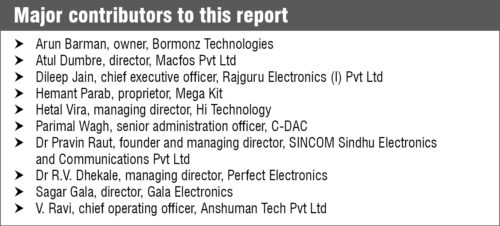With automation, repetitive tasks have started becoming obsolete. To remain relevant in the industry in the coming years, developing new-age skills in areas like artificial intelligence (AI), the Internet of Things (IoT), robotics and cloud computing is mandatory

The field of technology is expanding at an exponential rate in today’s world. We are in the middle of Industry 4.0, and fields such as electronics are playing a major role in this revolution. In a country like India, which has more than fifty per cent of its population below the age of 25 and approximately 3500 engineering colleges, there are a number of opportunities for growth.
The problem is that India has vast resources but low workforce skills, especially when it comes to modern technologies. According to National Employability Report Engineers, 2019 by Aspiring Minds, employability of Indian engineers continues to be low, with more than eighty per cent of engineers unemployable for any job in the knowledge economy.
Analysing the situation, Dr R.V. Dhekale, managing director, Perfect Electronics, says, “It is necessary to give prime importance to electronics practicals in science and engineering colleges. At present, theory lectures are more as compared to practical hours in departments of electronics, physics, IT, etc. If equal theory hours and practical hours are given for science and engineering colleges, students will get inspired to do research to do something new in the sector. Unfortunately, that does not happen.”
With automation, repetitive tasks have started becoming obsolete. To remain relevant in the industry in the coming years, developing new-age skills in areas like artificial intelligence (AI), the Internet of Things (IoT), robotics and cloud computing is mandatory. For instance, talking about robotics, Hetal Vira, managing director, Hi Technology, says, “A lack of skilled talent in key design and engineering areas is also hindering Indian robotics growth. Other challenges include a limited investor base and a small domestic market for robotics in India. Cost of adopting robotic technology is very high due to the cost of procuring imported hardware components as well as training personnel.”
Market growth catalysts
As the demand for STEM (science, technology, engineering and mathematics) skills in the job sector increases, there is a need for introducing these to coming generations with educational programmes and DIY activities right from school days. Several companies are coming up with educational toys to make learning fun. Parents and educators must come together to ensure its success. Dr Pravin Raut, founder and managing director, SINCOM Sindhu Electronics and Communications Pvt Ltd, says, “Looking at the role of electronic gadgets in our day-to-day life, it is now becoming necessary to learn the gems of electronics from school days, instead of college. With this motto, SINCOM-Training Division conducts various modules of Electronics Workshop to provide hands-on training, especially for school students. The objective of this workshop is to develop students’ interest in the electronics field so that they acquire basic skills in electronic devices from childhood and become smart kids.”

Atul Dumbre, director, Macfos Pvt Ltd, confirms, “STEM earlier used to be an optional subject, but now it is an integral part of education. Along with that, there are many coaching institutes that are providing weekend or holiday training sessions with kits. This has created a buzz around kits.”
Vira elaborates on the need for experimental and experiential learning, “STEM learning wants people to understand that it is not just about new technologies, inventions or new medicines. Present-day needs of developing India require it to adopt several scientific and technological innovations. As a result, the education sector is facing a lot of challenges in meeting the skill demands. Offering a solution to this, STEM is emerging as the new alternative of futuristic education.”
Experts believe that government initiatives such as Atal Innovation Mission and Atal Tinkering Labs have boosted market growth. Hemant Parab, proprietor, Mega Kit, suggests, “The government and educational departments should think about revising the policies to incorporate more and more practicals along with theory in the syllabus to create the interest of students in the subject.”
These changes will make future generations smarter. Dileep Jain, chief executive officer, Rajguru Electronics (I) Pvt Ltd, explains, “Hands-on training to kids plays a major role, as nowadays many kids after working at school want to try at home. So, demand is created for the same.”
But what about college students who are forced to switch their domain when they lack the requisite skills? Parimal Wagh, senior administration officer, C-DAC, suggests partnerships between industry and academia, “The motivation of the faculty and professors to undertake projects in collaboration with the industry and experiment with kits for practical works act as major drivers for the growth in the education kits and technology.”
As a beginner, one often loses interest when stuck with a problem. Sometimes, even after a lot of research online, it gets difficult to determine the root cause. This is where the role of maker spaces and training services comes into play. Arun Barman, owner, Bormonz Technologies, says, “Good quality hands-on training programmes based on a student’s level of understanding should be implemented. It is true that theory without practical is empty, and practical without theory is blind. Many schools in cities have introduced STEM labs for learning with practicals, and almost all colleges organise hands-on training programmes conducted by training service providers. Thus, all manufacturers are looking for own or third-party training service providers so they can sell the training products/educational kits by providing training.”
Regarding the impact, Sagar Gala, director, Gala Electronics, conveys, “A robust STEM education creates critical thinkers, problem-solvers and next-generation innovators. Growth of STEM has picked up significantly over the last few years. India needs combined support from the government and other education societies to avail the opportunity and benefits of STEM education.”
Market challenges
For proper implementation of upgraded kits in schools and colleges throughout India, indigenous dealers still need to tackle a number of hurdles. In our economy, pricing plays an important role when it comes to competition among manufacturers. Jain says, “Mostly, the kits are a mixture of many IC components and modules. So, when an Indian company tries to make these kits, cost is higher because of the labour required to make them. International players like China get it cheaper and sometimes they make these kits automatically.”
About the present situation, Wagh says that the market is volatile, and it has proven that cost-effectiveness is very important. But customisation for Indian requirements also plays a challenging role.
Lack of trust among customers has a huge impact on the business. The main reason behind this is uncertainty regarding quality of products. Dumbre informs, “There are hundreds of kits, but very rarely you see a kit that is well-thought-over and well-made. That being said, it is a huge opportunity for us. We will certainly see some big players in this segment in the coming two to three years. Indian companies are also trying to make their own kits, but none have been very successful so far.”
Due to these reasons, when it comes to globalisation of business, V. Ravi, chief operating officer, Anshuman Tech Pvt Ltd, says, “International marketing continues to be a challenge for Indian companies due to lack of financial incentives. You will see German, Korean, Chinese and UK pavilions at most expos, while Indian pavilions are conspicuous in their absence, and even if these exist, they can be seen only in tier II and III expos.”
Another issue that needs to be discussed is availability of kits in different locations. A large population of India lives in rural areas. Experts agree that there is a huge gap in the urban and rural markets due to last-mile connectivity. Parab tells, “Manufacturers and the marketing sector in the field of educational kits are unable to reach district level in the country. Most parts of the country, especially rural regions, are not aware of the availability and, if that is not the case, they have to depend on metro cities to avail of these kits.”
Barman says that there is a need to provide training in educational institutions with our own designed training products based on Indian school and college syllabi.
Demand and supply
Kits are becoming advanced nowadays. DIY kits like Arduino, due to their simplistic use, are very popular among beginners. The integrated development environment (IDE) for Arduino is suitable for high-level programming languages like C and C++. Plug-and-play modules, known as shields, can be bought for adding inbuilt functionality. Even Raspberry Pi, which was developed in the UK to teach children programming and physical computing, has a growing demand in the country.

About technology trends, Wagh says, “Demand for training products is increasing with the number of institutions and universities coming into existence. Supply side also has different variants and available features. With the need for AI, the IoT and computing requirements coming into major streams, there will be growth of educational kits for experiments required for educational institutions.”
Although, availability of training products is sufficient as it is a mix of Chinese and Indian products, according to Barman, supply of high-quality products is not enough to meet the requirements when it comes to local dealers.
Parab adds, “Still, there is a huge difference between supply and demand not only in terms of quantity but also proper products to fulfil the exact requirements of the end customer, that is, students. Lack of a proper setup for after-sales backup is also a key issue in this field.”
Jain agrees, “The latest kits are not available to kids. In India, we still get smaller kits that work on LM555 or LM324. The supply of Arduino or Raspberry Pi kits is less. But market is growing, and supply will increase in the coming years.”
Changing scenario
The change in the ways of imparting knowledge to students over the past few years is apparent. Dr Dhekale says, “Students get more knowledge in a short time with the use of LCD projectors and screens. Educational videos can be played on smart TVs using Wi-Fi facilities. Video cameras are used to record lectures, which can be broadcast with a TV relay station.”
With growing awareness, demand for traditional products is also reducing. Manufacturers are upgrading their kits to compete in the market. Dumbre says from experience, “This field is very fast-changing. Trends come and go every year. The only exception is the projects in the education curriculum. For example, engineering students still use 8051 controller kit—and they have been using it from almost 15 years.”
Market opportunities
Because there are many opportunities, new entrants just have to pick the one that matches their expertise. V. Ravi, chief operating office, Anshuman Tech Pvt Ltd, suggests, “Upgrading traditional training products with the latest technology like Wi-Fi interface, PC interface, mobile interface, cloud-based delivery, etc should be on the menu to create differentiation in the already-crowded marketplace.”
Sharing his opinion on starting a business, Gala says, “New companies should first do market research for the products in demand. Then, they should source raw materials in bulk and use advanced manufacturing technology to gain economies of scale. They should also focus on quality.”

Government’s role
Along with parents and educational institutions, government policies can further boost market growth. Dr Dhekale suggests, “The government should increase grants on the educational sector. Currently, teaching staff in all colleges and universities are not sufficient. Posts of retired lecturers are not fulfilled by the government immediately, so the quality of education goes down in India.”
Experts are of the opinion that training centres with minimum cost can be started. Inclusion of augmented reality (AR) and virtual reality (VR) training platforms can also assist in catering to present requirements. Dr Raut says, “The government will provide financial assistance to set up modern manufacturing machinery in the real sense for the MSME sector. This will ultimately help generate new employment. And on the basis of market needs and addition of a new product range, production has grown in the last few years.”
Vira believes that measures such as making import procedures more affordable, keeping minimal paperwork, giving licence to traders for products like drones with a transparent after-sales policy and funding soft loans for startups can aid dealers.
Dr Raut is of the view that awareness can only be created through communication. He asserts, “The government will provide a common market platform (online) only for all educational institutes, as well as the government and private manufacturers.”
He adds, “Presently, GST rate is eighteen per cent. As this product is for educational purpose, GST rate needs to be down to five or zero per cent.”
Also, for existing policies to be effective, strengthening them is essential. V. Ravi says, “Central Vigilance Commission (CVC) and Right to Information (RTI) norms should be strengthened to encourage Made in India purchases. Modified Special Incentive Package Scheme (MSIPS) should recognise didactic training for manufacturers. Monetary incentive schemes should include dies/moulds for improving aesthetics for enhancing exports and Indian topline. Also, Market Development Assistance (MDA) should be broader and not just limited to a few government-supported institutions.”
Market options
Supply chain of electronic products includes various manufacturers, suppliers and distributors. There is a huge competition in this field owing to both local and global industry players. Some of them are mentioned below.
Rajguru Electronics (I) Pvt Ltd is engaged in the distribution, import, export and trading of electronic components and modules for training kits.
Mega Kit is an electronics manufacturer that supplies electronics project kits with detailed theoretical circuit description, functional block diagrams, complete component list, neatly-packed total components, etc.
Macfos Pvt Ltd (Robu.in) develops as well as distributes mechanical and electronic tools and services across the globe to colleges, research labs and hobbyists.
Perfect Electronics is a manufacturer of educational products such as electrical and electronics experimental boards for the departments of physics, electronics and computer science. Projects for electronics engineers and hobbyists are also developed at their facility.
Bormonz Technologies is a provider of R&D electronics modules, development boards along with educational project guidance.
Hi Technology is a provider of electronic projects (DIY) and components, development boards, kits, tools, education apparatus and sensors.
SINCOM Sindhu Electronics & Communication Pvt Ltd manufactures, supplies and exports electronics educational trainer kits and equipment.
Gala Electronics is a robotics kit solution company, distributor and supplier of electronic components such as passive electronic components, chip resistors and electrolytic capacitors.
Anshuman Tech Pvt Ltd is a manufacturer and exporter of laboratory training equipment and educational training equipment across India.
FPGA Solution is a manufacturer and supplier of design environments, low-cost development boards, training kits and project hobby kits.
Kits‘n’Spares is a provider of several training products including DIY kits for beginners and engineers, development boards and equipment.







